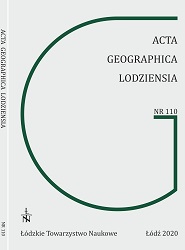LACUSTRINE, FLUVIAL AND SLOPE DEPOSITS IN THE WETLAND SHORE AREA IN SERTEYA, WESTERN RUSSIA
LACUSTRINE, FLUVIAL AND SLOPE DEPOSITS IN THE WETLAND SHORE AREA IN SERTEYA, WESTERN RUSSIA
Author(s): Piotr Kittel, Andrey Nikolaevich Mazurkevich, Alexander Aleksandrovskiy, Ekaterina Dolbunova, Mateusz Krupski, Jacek Szmańda, Renata Stachowicz-Rybka, Katarzyna Cywa, Agnieszka Mroczkowska, Daniel OkupnySubject(s): Archaeology, Historical Geography
Published by: Łódzkie Towarzystwo Naukowe
Keywords: sedimentology; micromorphology; micro- and macrofossils; geochemistry; palaeolake shore zone; archaeological layers;
Summary/Abstract: The article presents the results of a study on sediment deposition processes in the palaeolake shore zone, at the multi-layered Serteya II archaeological site in Western Russia. In recent years, geomorphological, palaeo-pedological and palaeoeco-logical research was undertaken in strict cooperation with archaeological fieldwork. The Serteya II site occupies a substantial area of a kame terrace and biogenic plain within a palaeolake basin. From an archaeological point of view, the site is represented by few Mesolithic artefacts, but mostly by remnants of hunter–gatherer–fisher communities attributed in the Russian scientific tradition to the Neolithic period and dated from 6300 BC to 2000 BC. Later, the area was used by people in the Bronze Age, Early Iron Age and Early Middle Ages. The integration of archaeological and multidisciplinary palaeo-environmental research allowed the natural and human induced deposition of mineral-organic and minerogenic sediments to be reconstructed, as well as the development of structures in the lake shore zone. The changes from lacustrine to fluvial system were documented and the human impact is recorded mostly in the acceleration of slope processes
Journal: Acta Geographica Lodziensia
- Issue Year: 2020
- Issue No: 110
- Page Range: 103-124
- Page Count: 22
- Language: English

